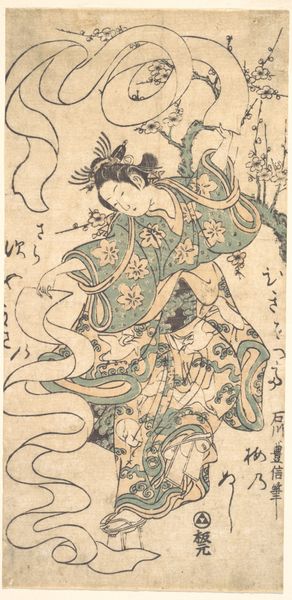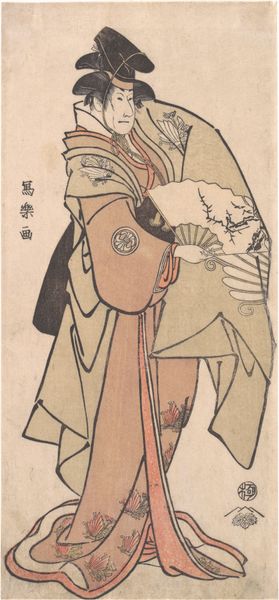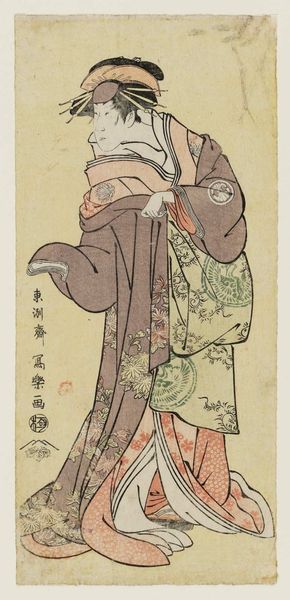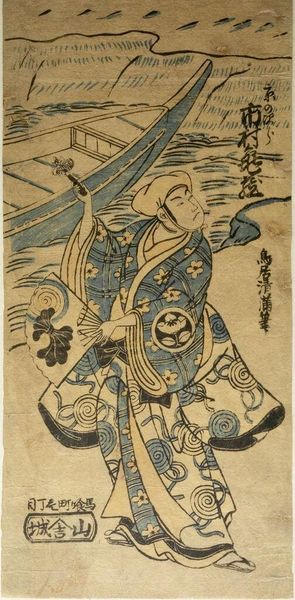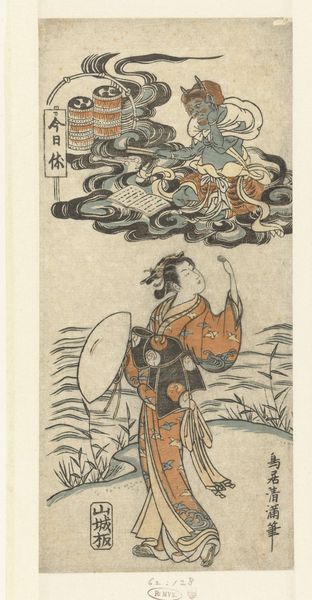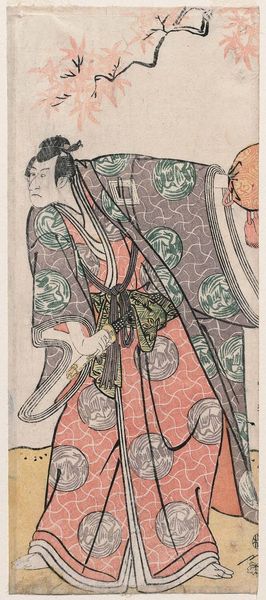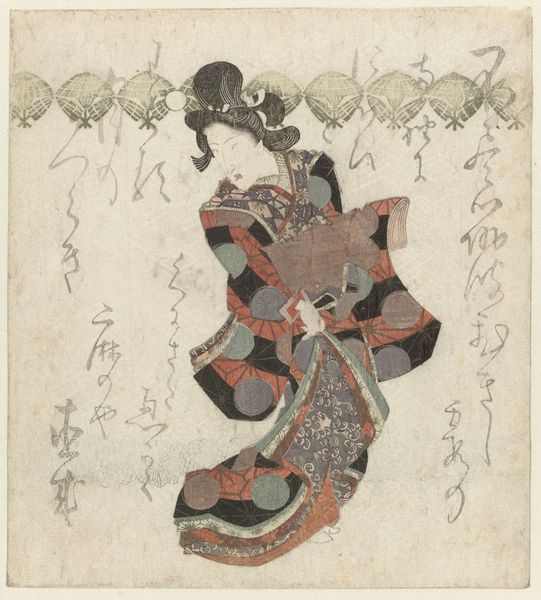
The Actor Bando Hikosaburo 2nd as an Oiran in a Gauze Kimono, Standing, Tying Her Obi 1754 - 1774
0:00
0:00
drawing, print, ink, woodblock-print
#
portrait
#
drawing
#
ink drawing
# print
#
asian-art
#
ukiyo-e
#
figuration
#
ink
#
woodblock-print
Dimensions: 27 11/32 x 4 in. (69.5 x 10.2 cm)
Copyright: Public Domain
Curator: Standing before us is a work by Torii Kiyomitsu dating from around 1754-1774. It's a woodblock print, portraying "The Actor Bando Hikosaburo 2nd as an Oiran in a Gauze Kimono, Tying Her Obi." What strikes you first about it? Editor: The sheer verticality of it! It feels incredibly elongated and stylized, like a deliberately artificial image. There’s a sense of constraint, almost as if the figure is confined within a very prescribed societal role. Curator: That’s perceptive. The towering height intensifies the figure's presence. Kiyomitsu, deeply immersed in the Kabuki world, often used elongated figures in his prints, reflecting both aesthetic preferences of the time and the elevated status afforded to performers. How does the actor being presented as an Oiran change your interpretation? Editor: It heightens the layers of artifice and constructed identity. The actor, a man, is playing a woman, who is in turn playing a specific role in society – the Oiran, a high-ranking courtesan. It makes me consider how gender is performed and codified through symbols, costume, and pose. This is a potent example of how the artifice can become its own reality. Curator: Absolutely. In Ukiyo-e prints, certain motifs recur: hairstyles, makeup, posture. Note how Bando Hikosaburo's elongated hand gesture echoes symbolic rituals—a sort of language that defines roles and attributes associated with this type of persona. His presence reflects back upon itself, creating meta-levels of cultural expression. The gauzy kimono adds an ethereal layer to the character—her perceived beauty veiled behind delicate fabric as if holding herself in that specific moment in time. Editor: Thinking about this through a contemporary lens, I wonder about the gaze – who is this performance for? The composition situates the figure away and alone with viewers. I see both glamour and exploitation reflected here, questioning both performative artifice alongside deeply unequal dynamics of gender. What about the text alongside the portrait? What meaning would that have for contemporary viewers? Curator: Ukiyo-e prints often included poems or text relevant to the subject. In this case, the text contains cultural metaphors easily grasped in contemporary Japanese culture but likely inaccessible for our non-Japanese speaking listeners—evoking elements of the play being presented as well as conveying a flattering sense of sophistication for an educated audience member. But more than the text, what I truly adore about this print is how tradition finds expression alongside performative presentation; beauty and spectacle woven into something complex! Editor: Yes, and the tension between those threads is precisely what keeps this image so relevant and thought-provoking centuries later. It makes us look critically at the performances we engage in today.
Comments
No comments
Be the first to comment and join the conversation on the ultimate creative platform.



